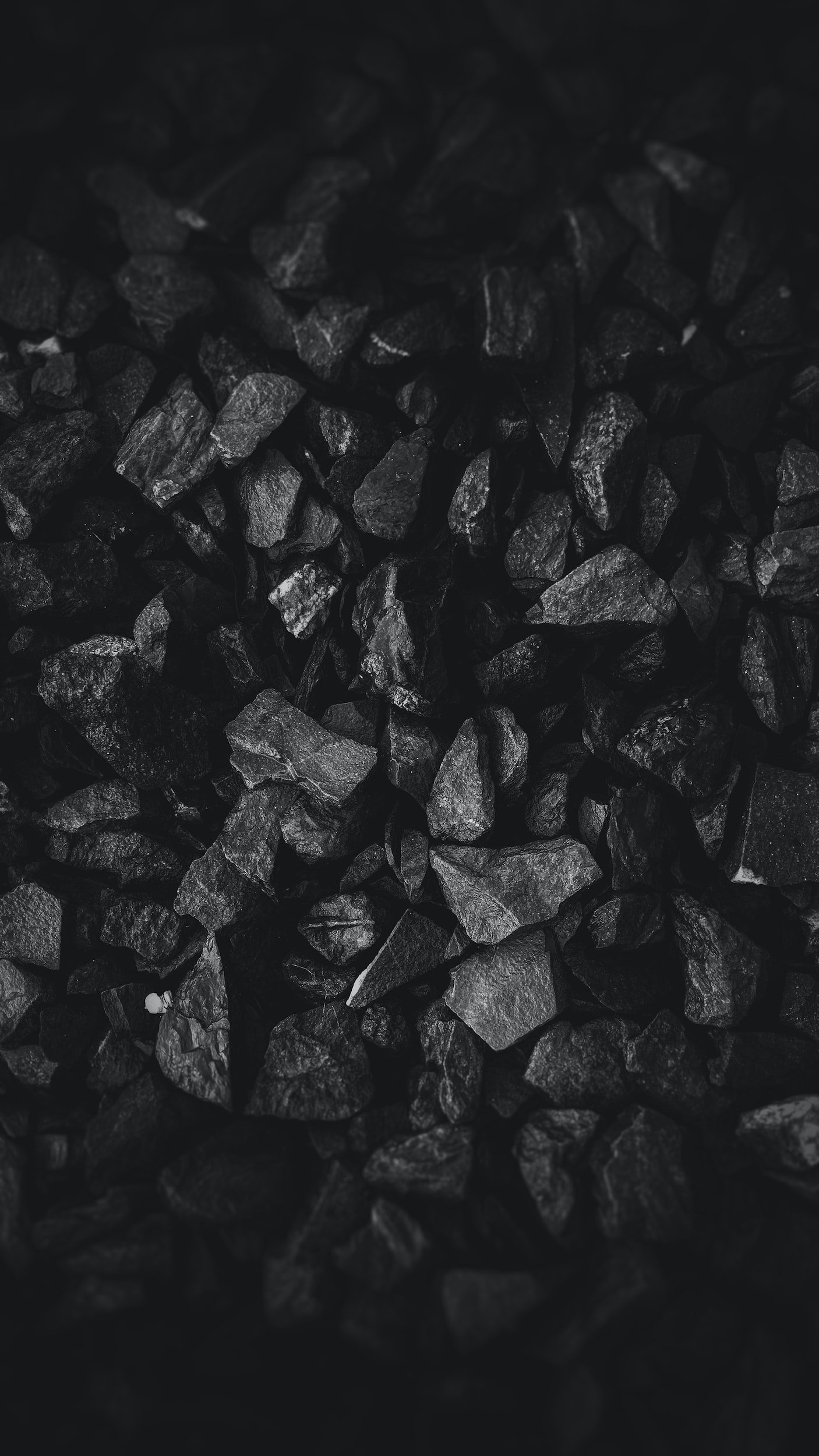
Glossary
Inertinite
Inertinite is a carbon-rich material commonly found in biochar that is exceptionally resistant to decomposition. It forms from plant material that has been exposed to high temperatures in processes such as pyrolysis. Unlike other carbon fractions in biochar that may degrade over time, inertinite’s structure is highly stable, allowing it to persist in soil for thousands of years. This remarkable durability makes inertinite a key player in carbon sequestration, as it locks carbon away from the atmosphere for the long term. Additionally, its presence in biochar contributes to soil health by improving soil structure, enhancing water retention, and providing a stable habitat for microorganisms. These qualities make inertinite a valuable asset in sustainable agriculture and climate change mitigation strategies
Monitoring, Reporting, and
Verification (MRV)
MRV stands for "Measurement, Reporting, and Verification." It is a process used to measure and track greenhouse gas emissions and reductions from various sources, such as factories, power plants, and transportation. MRV involves collecting data on emissions, analyzing the data, and reporting it to regulatory agencies or other stakeholders. Verification ensures that the data is accurate and reliable. MRV is an important tool for monitoring progress in reducing greenhouse gas emissions and meeting climate goals. It is also used to assess the effectiveness of carbon offset projects, which aim to reduce emissions and compensate for them by investing in emission-reducing projects elsewhere.
Negative Emissions Technology
(NET)
Negative Emissions Technology (NET) is a type of technology designed to remove carbon dioxide from the atmosphere, with the aim of reducing the concentration of greenhouse gases that contribute to climate change. NETs can include a variety of different techniques, such as afforestation, reforestation, carbon capture and storage (CCS), and bioenergy with carbon capture and storage (BECCS). These techniques are often used in combination with each other to achieve the desired level of carbon dioxide removal. The goal of NETs is to create "negative emissions," where more carbon dioxide is removed from the atmosphere than is emitted, which can help to offset the effects of carbon emissions and reduce the impact of climate change.
Carbon Footprint
Carbon footprint refers to the amount of greenhouse gas emissions, primarily carbon dioxide, that are generated by an individual, organization, event or product. It is a measure of the impact that human activities have on the environment, particularly on climate change. The carbon footprint can be calculated by taking into account various factors such as energy consumption, transportation, food and water use, and waste production. By understanding their carbon footprint, individuals and organizations can identify ways to reduce their greenhouse gas emissions and minimize their impact on the environment.
Biochar
Biochar is a porous carbon compound with a substantial surface area that can adsorb a significant amount of soil nutrients and water molecules. With its “corral-like” structure, biochar houses all manner of microorganisms and soil biota.
Often called biomass or feedstock, organic materials such as wood, almond shells, etc. are what Sitos biochar is made from. Carbon dioxide that was once absorbed from the air by these varying biomasses, is now stored as carbon. Sitos process takes the biomass and separates the stored carbon from the excess matter, leaving purified carbon aka biochar.
Carbon Dioxide Removal
(CDR)
CDR stands for "Carbon Dioxide Removal" or "Carbon Removal." It refers to a set of technologies and strategies aimed at removing carbon dioxide from the atmosphere and/or oceans, to mitigate the effects of climate change. CDR technologies include, but are not limited to, afforestation and reforestation, ocean fertilization, direct air capture, bioenergy with carbon capture and storage, and soil carbon sequestration. The goal of CDR is to reduce the amount of carbon dioxide in the atmosphere to prevent further climate change and restore the Earth's natural carbon cycle.
Life Cycle Assessment (LCA)
LCA stands for "Life Cycle Assessment." It is a process used to evaluate the environmental impacts of a product, service, or process over its entire life cycle, from raw material extraction to disposal. LCA takes into account the use of energy and resources, emissions of greenhouse gases and other pollutants, and other environmental impacts, such as land use and water consumption. It helps to identify opportunities for reducing the environmental impacts of a product or service by identifying areas where improvements can be made. LCA is an important tool for sustainability and can be used to compare the environmental performance of different products or services.
Carbon Sequestration
Carbon sequestration is the process of capturing and storing carbon dioxide from the atmosphere to mitigate the effects of climate change. It can occur naturally, such as when plants absorb carbon dioxide during photosynthesis, or through human intervention, such as when carbon capture and storage technology is used to capture carbon dioxide emissions from power plants or other industrial processes. Carbon sequestration can also be achieved through land management practices such as afforestation and reforestation, which involve planting trees to absorb carbon dioxide from the atmosphere and store it in the tree biomass and soil. The goal of carbon sequestration is to reduce the amount of carbon dioxide in the atmosphere, which is a major contributor to global warming and climate change.
Net-zero Emissions
Net-zero emissions refer to the state in which the amount of greenhouse gases (primarily carbon dioxide) released into the atmosphere is equivalent to the amount removed from the atmosphere. Achieving net-zero emissions is necessary to halt the increase in global average temperatures and mitigate the effects of climate change. This can be achieved by reducing greenhouse gas emissions through the adoption of renewable energy sources, energy efficiency measures, and other sustainable practices, while also utilizing carbon removal or carbon capture technologies to remove or offset the remaining emissions. The goal of reaching net-zero emissions has been widely adopted by governments, businesses, and individuals as a critical step in addressing climate change.
Carbon Offset
Carbon offset is a way to balance the amount of carbon dioxide (CO2) released into the atmosphere by funding projects that reduce, remove or prevent an equivalent amount of greenhouse gases from being emitted elsewhere. Carbon offsetting is used to compensate for carbon emissions that cannot be avoided or reduced through sustainable practices. Examples of carbon offset projects include renewable energy projects like wind and solar farms, afforestation and reforestation, and projects that capture and store carbon dioxide (CCS). The carbon offset market has grown in recent years as individuals, companies and governments seek to take responsibility for their carbon footprint and support sustainable development.
Carbon Neutrality
Carbon neutrality refers to the state in which an entity or system (such as a company, product, service, or even an entire country) has achieved a net-zero carbon footprint, meaning that the amount of carbon dioxide and other greenhouse gases released into the atmosphere is offset by an equivalent amount of carbon removal or carbon offsetting activities. In other words, the entity or system is not adding any additional carbon dioxide to the atmosphere. Achieving carbon neutrality typically involves reducing greenhouse gas emissions through various strategies such as energy efficiency, switching to renewable energy sources, and adopting sustainable practices, while also utilizing carbon removal or carbon offsetting mechanisms to offset any remaining emissions that cannot be reduced.
Slow-pyrolysis
Sitos biochar is made using a process called slow-pyrolysis. Biomass (wood, almond shell, corn husk) is heated to high temperatures within a low-oxygen pyrolyzer where it does not burn. As the biomass heats up, any water held inside evaporates while all methane gases and volatile materials rise to the top of the machine. As the pyrolyzer's ceiling contains oxygen, the risen gases burn, creating enough heat to maintain the entire pyrolysis process. Simultaneously, the carbon left at the bottom of the machine continues to smolder and purify itself in the heat, creating high-quality, durable biochar.
Feedstock
In the context of biochar production, "feedstock" refers to the organic material used as raw material for making biochar. Feedstock can come from a variety of sources, including agricultural waste, forestry residues, and other biomass materials. The feedstock is typically heated in a low oxygen environment during the slow pyrolysis process to produce biochar. The properties of the feedstock, such as its chemical composition and moisture content, can affect the quality of the resulting biochar.
Carbon Removal
Carbon removal refers to the process of removing carbon dioxide from the atmosphere and storing it in a long-term or permanent manner, thus reducing the concentration of greenhouse gases in the atmosphere and mitigating the effects of climate change.
Circular Economy
A circular economy is an economic model that aims to reduce waste and create a closed-loop system by keeping materials and resources in use for as long as possible. It involves designing products and systems in a way that maximizes their reuse, repair, and recycling potential, and minimizes the use of resources and generation of waste. The goal of a circular economy is to create a sustainable and regenerative system that benefits both the environment and the economy.
Regenerative Agriculture
Regenerative agriculture is a farming approach that focuses on building healthy soils, restoring biodiversity, and improving ecosystem services. The goal is to create a self-sustaining system that not only produces food but also enhances the natural resources it relies on. This involves practices such as crop rotations, cover cropping, reduced tillage, intercropping, agroforestry, and the integration of livestock. Regenerative agriculture seeks to increase soil organic matter, reduce erosion and water pollution, enhance carbon sequestration, and improve the resilience of farming systems to climate change.

